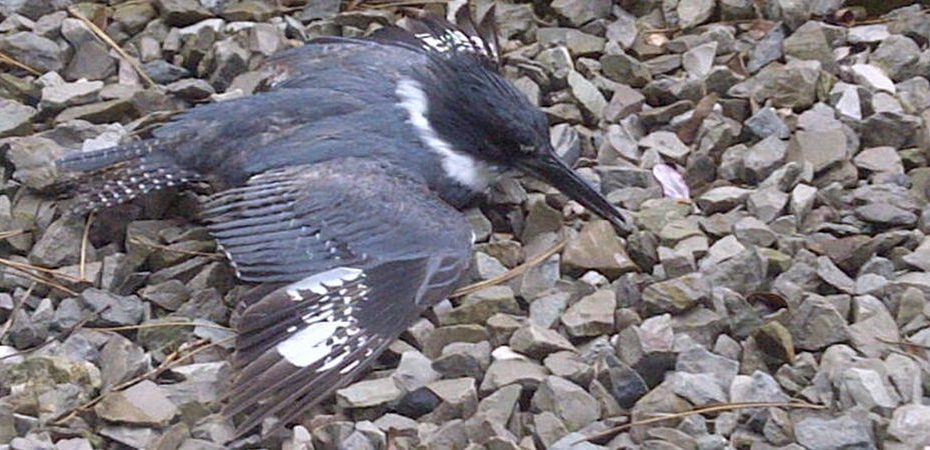From having pet companions to birdwatching, the love for animals unites many of us. Yet there’s an inconvenient truth: not everyone is aware of the impact that pets have on sensitive wildlife populations. For instance, free ranging cats are one of the biggest threats to birds. Whether to let pet cats roam free outside has been a long and heated debate, but we don’t have to choose.
Keep reading to find out how we can help both cats and birds safely coexist in their shared habitats.
Domestic Cats: A Leading Cause of Bird Mortality
Stunned belted kingfisher © Robin Wells
Free-roaming cats can put wildlife at risk. Every year, Toronto Wildlife Centre’s hotline gets hundreds of calls from people who have found a wild animal that has been attacked by a cat. For example, this northern cardinal was treated after it had been attacked by a cat:
Research conducted by Avian Conservation and Ecology in 2013 estimated that between 100 million and 350 million birds are killed by cats every year in Canada. Although the number of other animals killed by cats in Canada has yet to be documented, we can take reference from an estimation of research in the United States: 22.3 billion mammals and 1.1 billion amphibians and reptiles are killed by free-roaming cats per year in the United States.
Even if cats don’t hunt, their presence outside leads to undesirable consequences to birds, such as a reduction in the amount of food brought to nestlings.
Hidden Hazards for Cats
© Mircea Iancu
Allowing pet cats to roam outdoors unsupervised can also be dangerous to their well-being. When outside, cats face encounters with larger predators, fights with other cats, traffic accidents, exposure to diseases and parasites, ingestion of poisons or toxins, and the possibility of getting lost or stolen. According to a study conducted by the Toronto Region Conservation Authority and the University of Toronto in 2022, as many as one million animals are killed on roads in the Greater Toronto Area each year.
Enjoying the Outdoors (Under Supervision)
© Birhanb
Fortunately, there are many things that pet owners can do to help keep pets and wildlife safe. Keeping your pet cats indoors is an easy option. But if you decide to let your cat outside, here are three things you could do:
Keep your cats on leash. Never leave your cats unattended when outside. You could opt for taking them for a walk using a harness, which has proven to be more comfortable for walking than a collar. H-harnesses and vest harnesses are the most common and comfortable choices. Help your cats get familiar with them by giving them appropriate training, such as practicing the behavior indoors first.
Build a catio (cat patio). If you are too busy to walk your cats, and have an outdoor space available, build a catio for them. A catio is a protected enclosure, usually placed in a backyard, that allows your cats to get some fresh air and sunlight without exposing themselves to the risks of traffic, predators and illness. You can find some handy catio tips in this blog.
Place birdbaths and feeders in safe places. In case your cats wander in your yard without you knowing, keep birdbaths and feeders out of their reach. To do this you can install them on top of metal poles (the taller the better) or put them away from shrubbery where your cat could easily hide to attack. Another option is setting up a simple “all natural” birdbath defence for low birdbaths.
Keeping Cats and Wildlife Safe
Cat patio © Ari Evergreen
Both cats and wildlife deserve a safe living space, and it’s on us to make it happen. Check out Toronto Wildlife Centre’s Keeps Cats and Wildlife Safe campaign to learn more about the issue and what you can do to help.
Resources
The post Conserving Biodiversity: Finding Harmony Between Cats and Birds appeared first on Ontario Nature.
